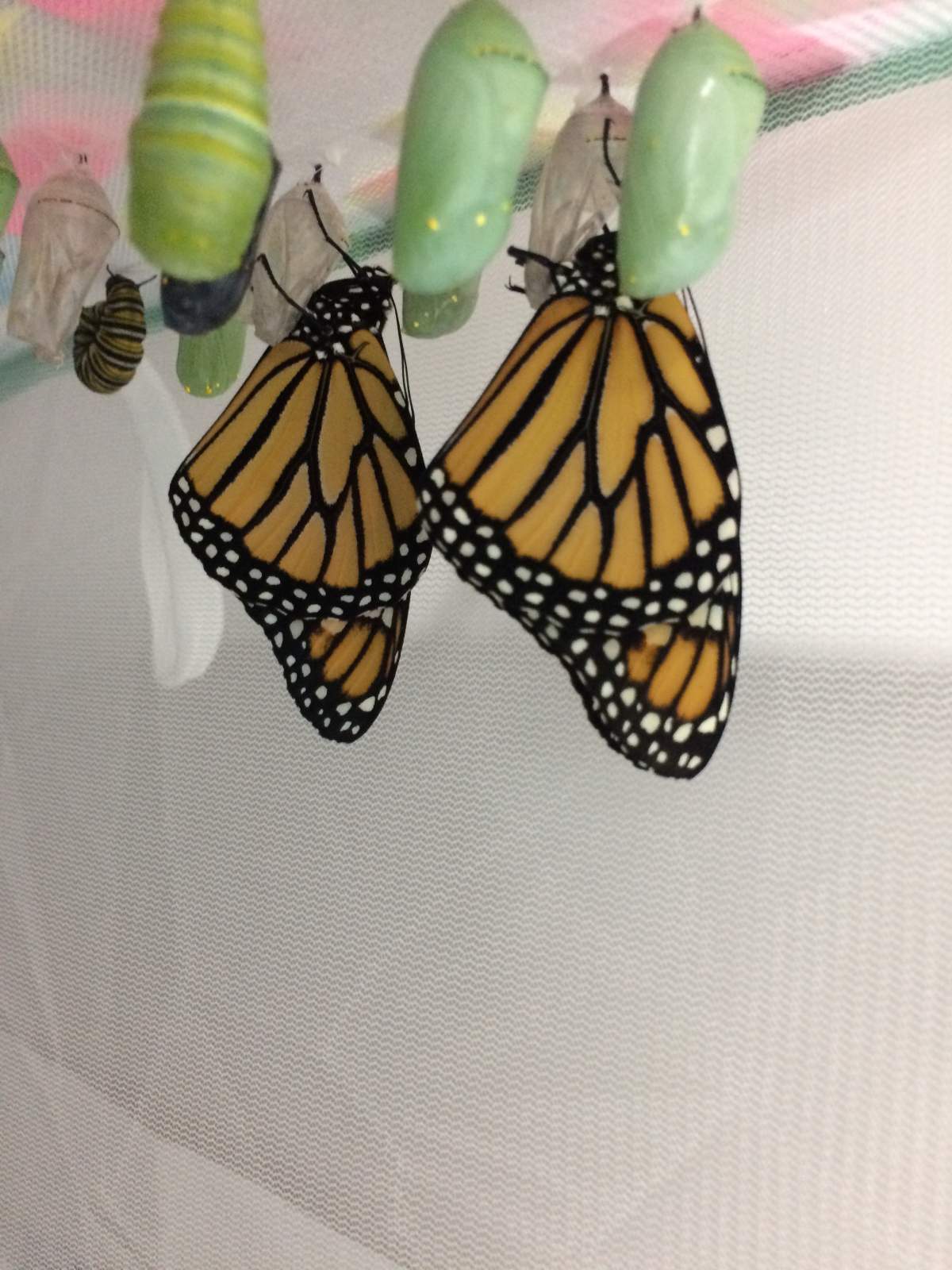A woman from Minesing, just northwest of Barrie, is doing her part to help the endangered Monarch butterflies.

Cheryl Fotherby has sheltered and released 117 monarch butterflies back into the wild so far this year. In total, over the last couple of years, she has released 184 butterflies.
However, according to Fotherby, the operation began much smaller.
“I’ve been growing milkweed in my front flower bed for the last probably 30 years for the monarchs because I heard they were an endangered species, and that’s all they will eat or lay their eggs on,” she said.
According to Fotherby, one day while she was gardening, she saw a caterpillar being attacked by ants and wasps.
“I decided right then and there that I would be on watch to help any others,” she said.
Fotherby snapped into action and purchased habitats to protect future caterpillars. Last summer, she found, fostered and released 10 butterflies. This year, she began looking for eggs much earlier.
Now, housing dozens of butterflies at a time in three large and two smaller mesh habitats inside her home, Fotherby says the butterflies have become a very time-consuming hobby.

Get breaking National news
“The large habitats can house anywhere from 10 to 12 butterflies at a time. The two smaller ones I wouldn’t put more than five in,” she explained, saying the butterflies can get quite large right before they are released.
At one point, Fotherby was taking care of 100 caterpillars, all at various life stages that were eating more than 30 milkweed leaves a day.
“Some people might think ‘it’s terrible you’re taking them out of the wild,’ but you know what? They’re not going to survive in the wild,” she said.
According to Fotherby, each female monarch can lay up to 100 eggs, however, only two will likely survive.
“Those are not good odds,” she said. “That’s why there are so many people trying to help.”
She says the point is to give them a protected space to grow, before being released back into the wild.
“I try to do my part to help,” she said. “And this really is a big thing, because without human intervention monarchs are not going to survive.”
Fotherby says aside from finding milkweed for the caterpillars to eat, taking care of them is not a terribly difficult task.
For those looking to help, she says a good first step would be to plant some milkweed.
“One of the biggest problems is that pesticides and weed killer is killing milkweed because, well, it’s a weed, and then they have nothing to eat or lay their eggs on.”
Fotherby says caterpillars can usually be found by small holes on the milkweed leaves.
And in terms of sheltering the little insects, she says habitats can be found at a few local stores, however, she prefers the larger ones which can be found online for a reasonably low cost.
“Other than that it’s just about giving them enough milkweed to eat,” she said.

Fotherby has also turned the hobby into a learning opportunity. She has been meticulously documenting the various stages of life to produce teaching materials for local-area children.
She has even allowed the Bradford EarlyON Child and Family Centre to foster some of the caterpillars so the children can watch as they transform into butterflies.
“They use them as a learning demonstration, so the children can watch them grow. And they release them with the children,” she said. “It’s a really wonderful learning experience.”
Now, with five operational habitats in her home, Fotherby says she has no plans of stopping anytime soon and hopes to release even more monarchs next year.
“It’s a privilege to be able to do this,” she said. “I think it’s our responsibility as humans to look after what we have been given. If we each do our best to support our environment, together we can make a huge impact for sustaining our planet,” she said.










Comments